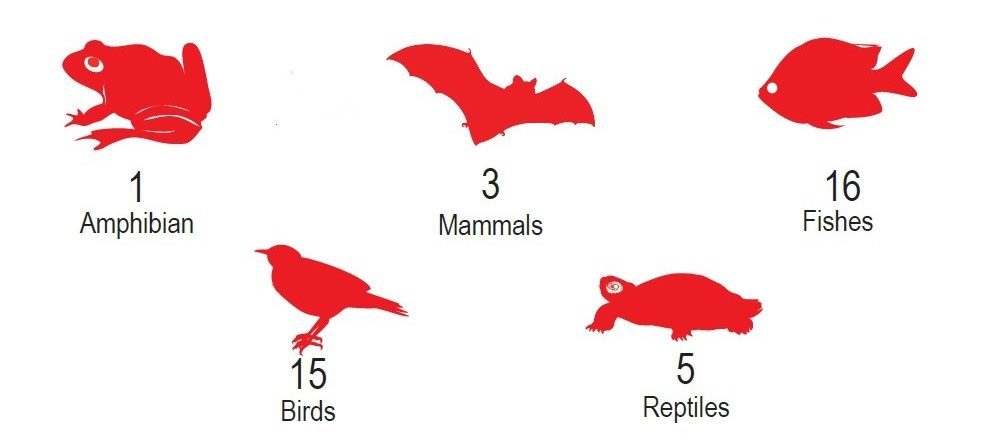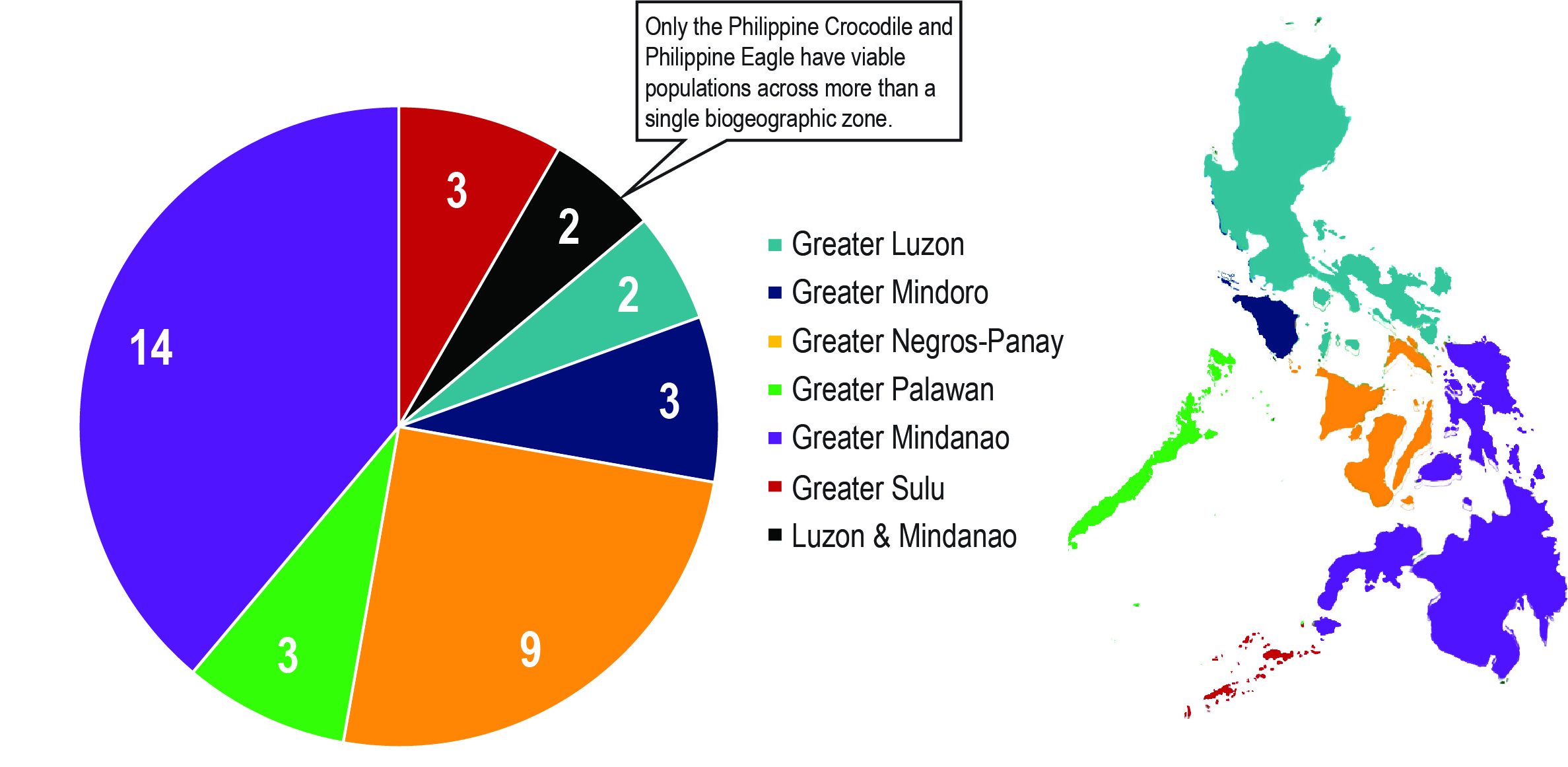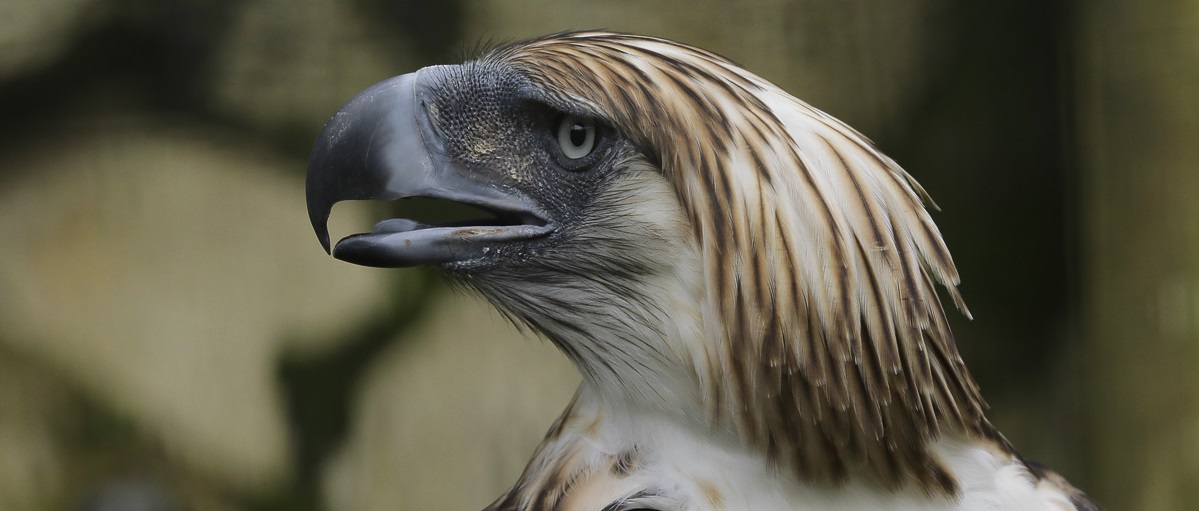Elevated endemism & extinction risks
The Philippines is an archipelagic nation, composed of over 7,640 islands, situated in the west Pacific. Its long isolation has resulted in high levels of endemism in its flora and fauna. The fact that the country comprises the entirety of its own biodiversity hotspot is a testament to this!
However, this unique biodiversity is under threat. Forest loss in the Philippines has left only 12% of historical primary forest cover remaining (Verburg & Veldkamp 2004). Overexploitation in many areas adds to the problem, placing many species at very high risk of extinction.

There are 40 ASAP species occurring in the Philippines (Critically Endangered land or freshwater vertebrates) with a staggering 90% of them (36 species) being endemic to the country. This high level of endemism makes the archipelago a high-priority region for averting extinctions of ASAP species.
Patterns of endemism

The islands of the Philippines can be divided into six broad biogeographic zones. The fauna in each of these areas displays a marked difference when compared with even adjacent areas. It is thought that the deep sea channels between these island groups prevented the movement of species between biogeographic zones even during periods of much lower sea level, such as the Ice Ages, and thus formed localised zones of endemism. Most ASAP species endemic to the Philippines are entirely restricted to single biogeographic zones resulting in small distributions for many ASAP species, and increased risks of their extinctions.
This is illustrated by the Cebu Flowerpecker Dicaeum quadricolor which is endemic to the island of Cebu – a highly urbanised island that has undergone drastic deforestation, and retains barely 0.03% of its original forest cover. Due to the extensive forest clearance, the species now has an extremely small, severely fragmented range and was feared extinct until its rediscovery in 1992 – though recent sightings have been sporadic, the bird was recently spotted (February 2019) by ongoing surveys in Cebu’s Alcoy Forest (Paguntalan, L. J., pers. comms. 2019).
Conserving ASAP species in the Philippines

A number of dedicated organisations and individuals across the Philippines are implementing critical conservation efforts for some of the ASAP species, from species and habitat protection to addressing ex situ conservation needs, and their efforts go towards the protection and recovery of these highly threatened species. These actions are particularly important for the endemic species where losses of these populations would result in the global extinction of the species. However, ramping up conservation actions for more ASAP species in the Philippines is vital if we are to ensure the long-term survival of these unique animals.
See our ASAP Partners to learn more about the work that they are doing in the Philippines, and read how one ASAP Partner, the Talarak Foundation, brought organisations together to address the conservation challenges of conserving five species endemic to the West Visayas.
Become an ASAP Partner
If your organisation works on conservation of ASAP species in the Philippines, and is interested in becoming an ASAP Partner, please get in touch.
References
Verburg, P. H., & Veldkamp, A. (2004). Projecting land use transitions at forest fringes in the Philippines at two spatial scales. Landscape ecology, 19(1), 77-98.
Peterson, A. T., Ball, L. G., & Brady, K. W. (2000). Distribution of the birds of the Philippines:
biogeography and conservation priorities. Bird Conservation International, 10(2), 149-167.
Featured image © Wildlife Reserves Singapore

